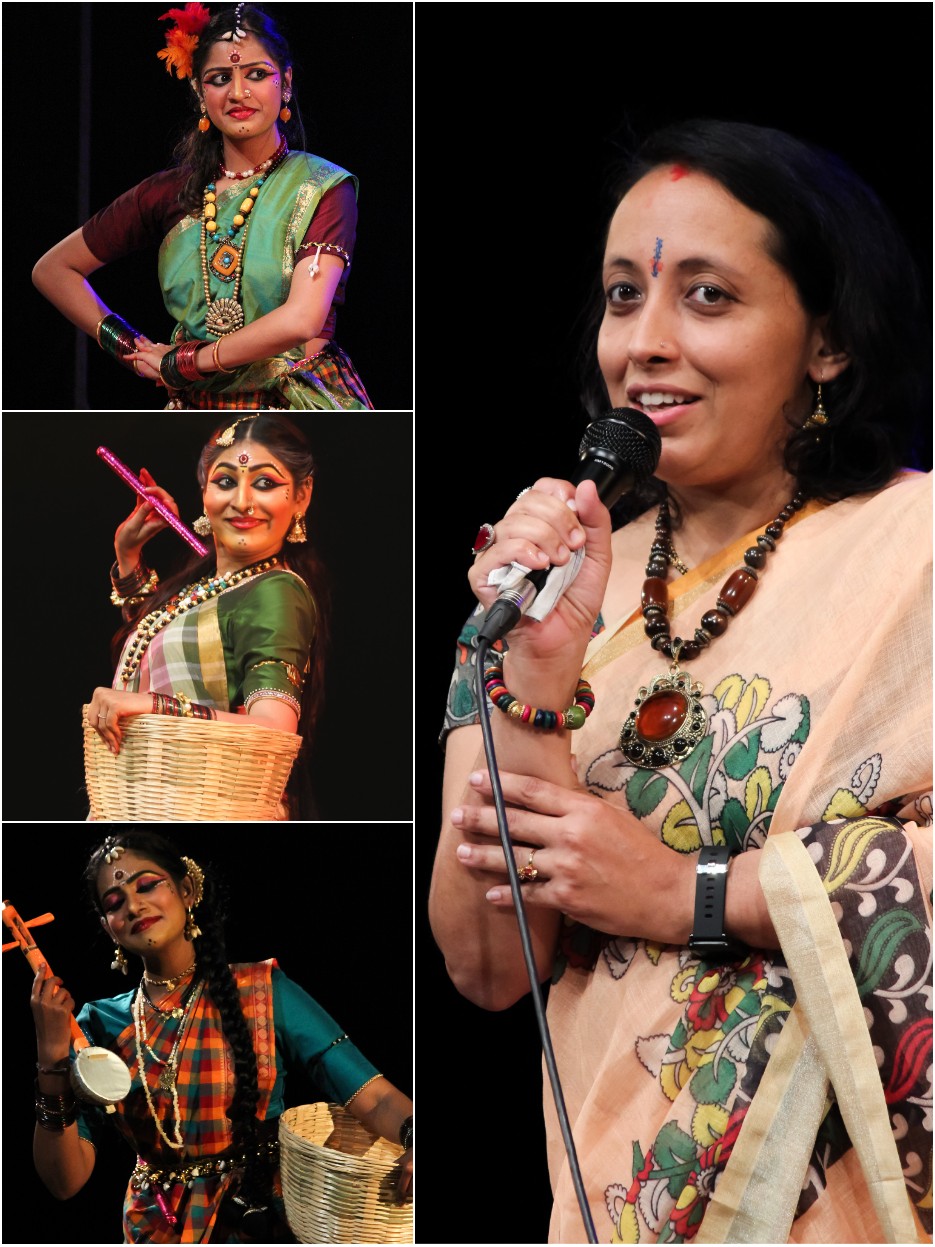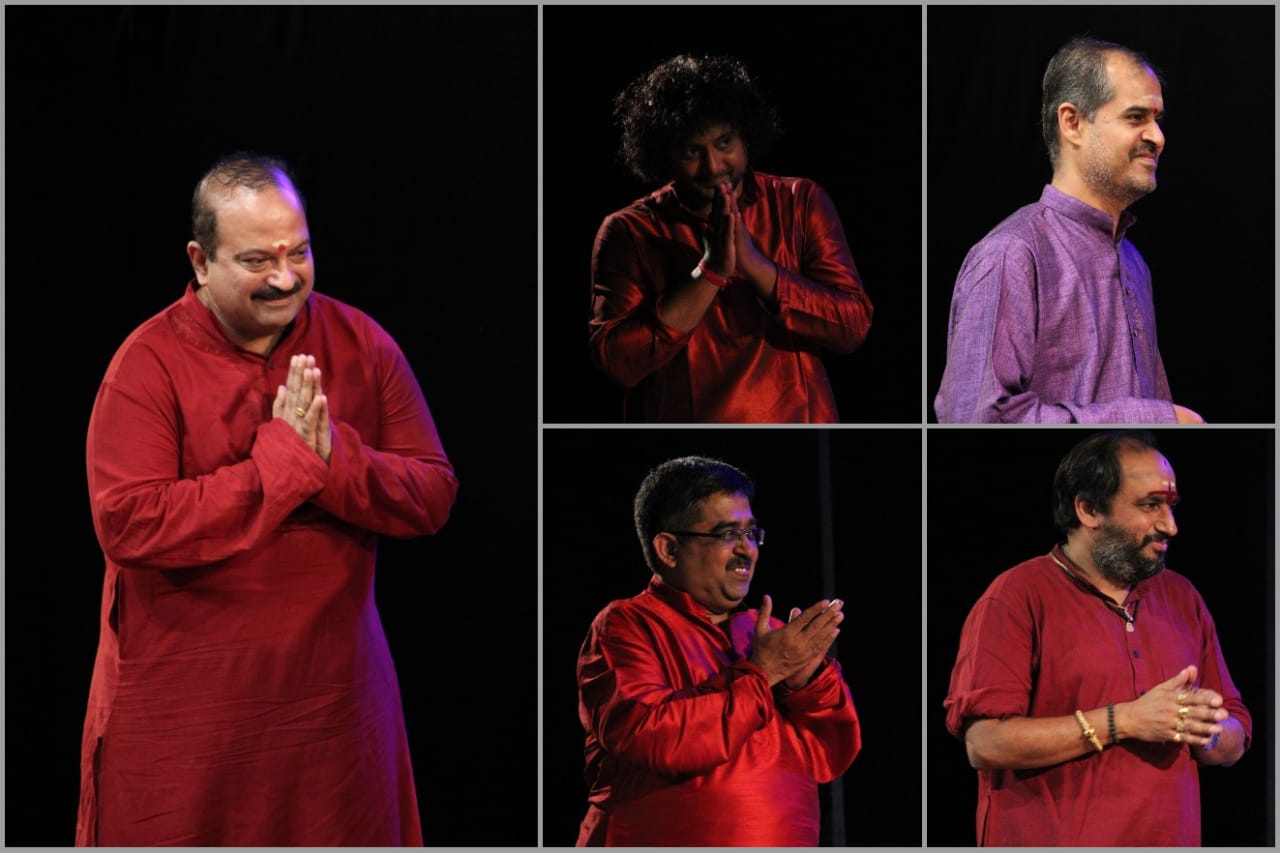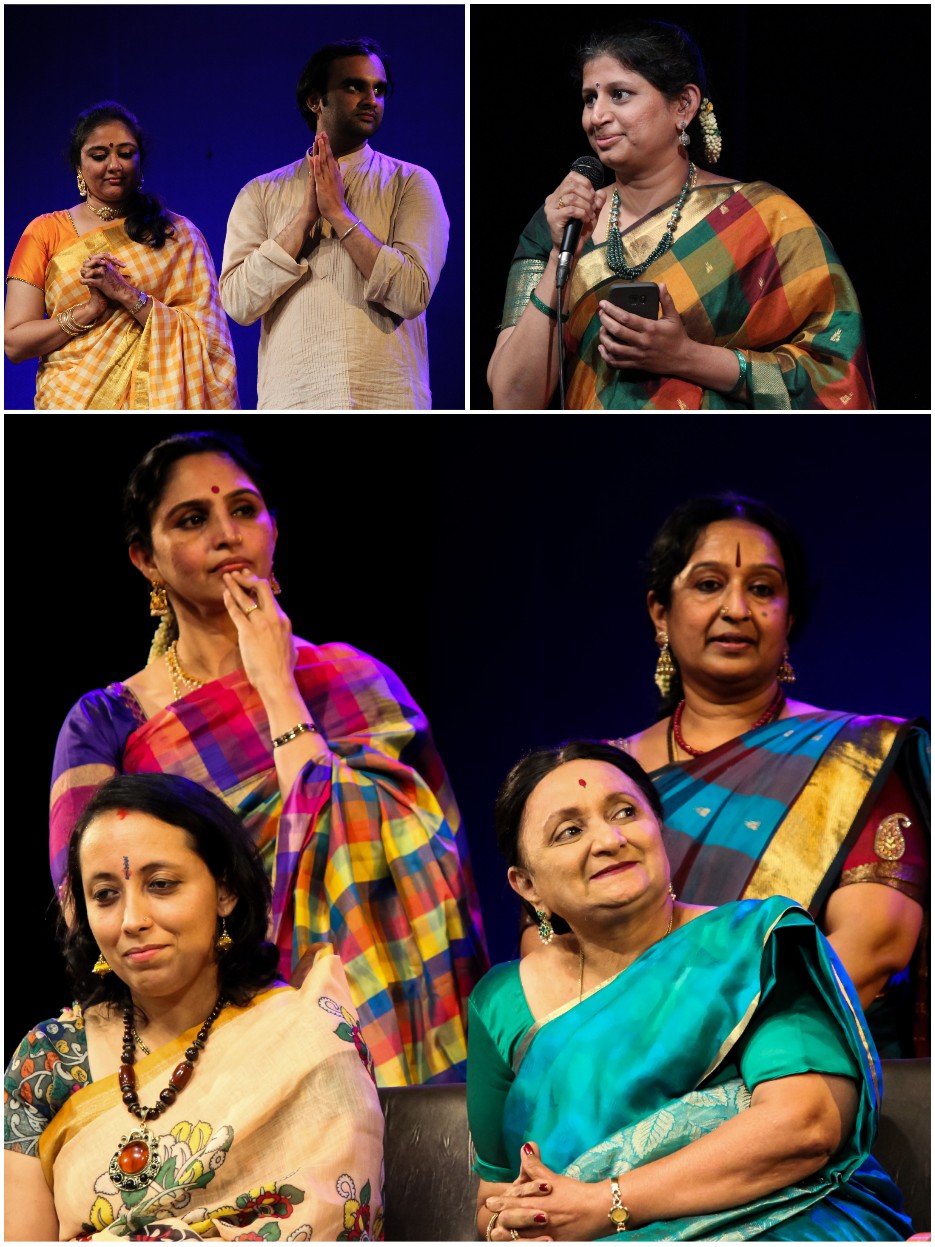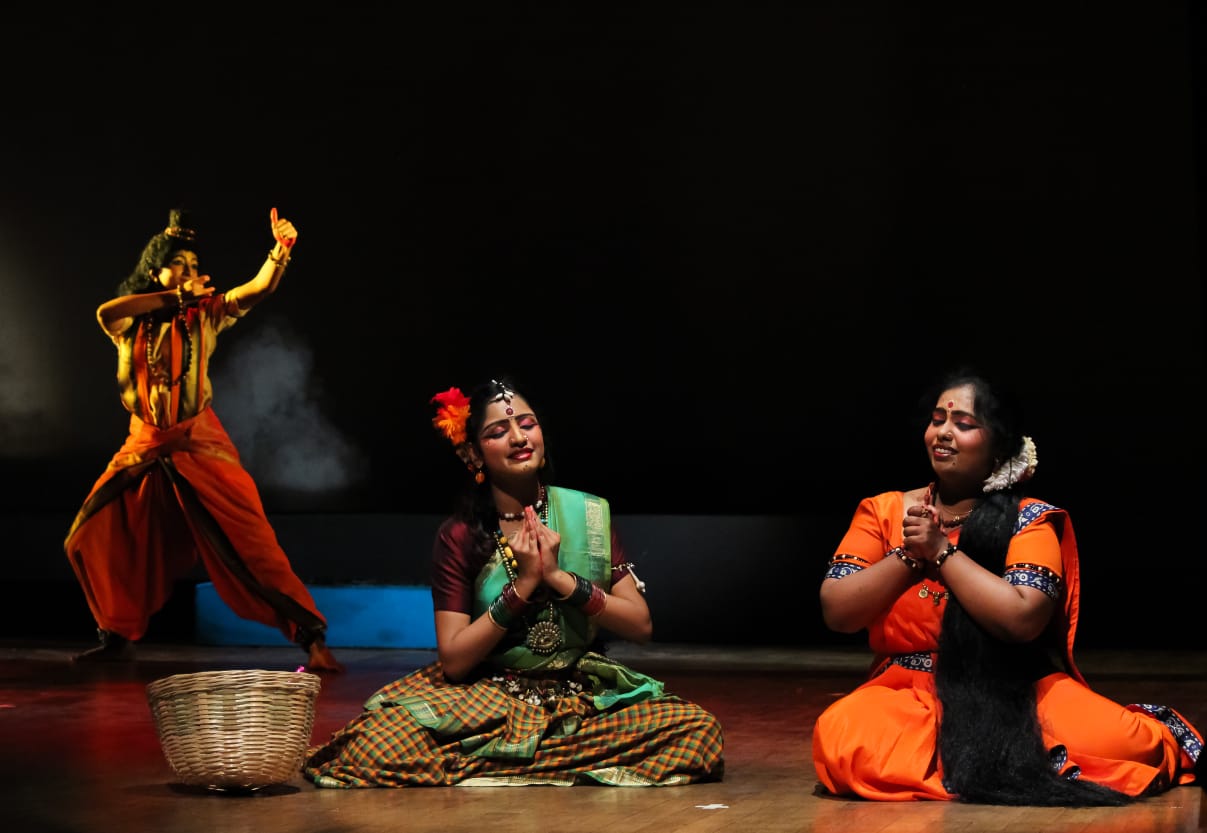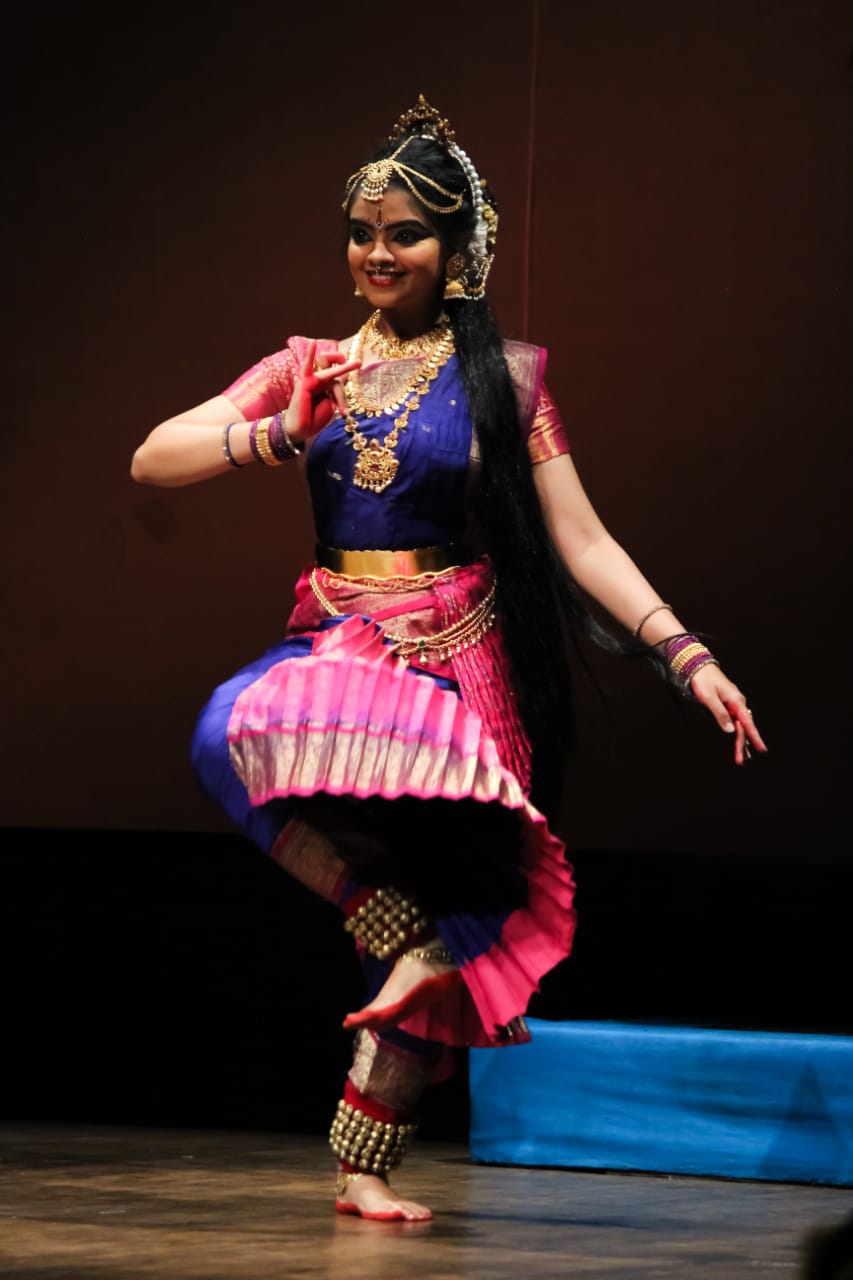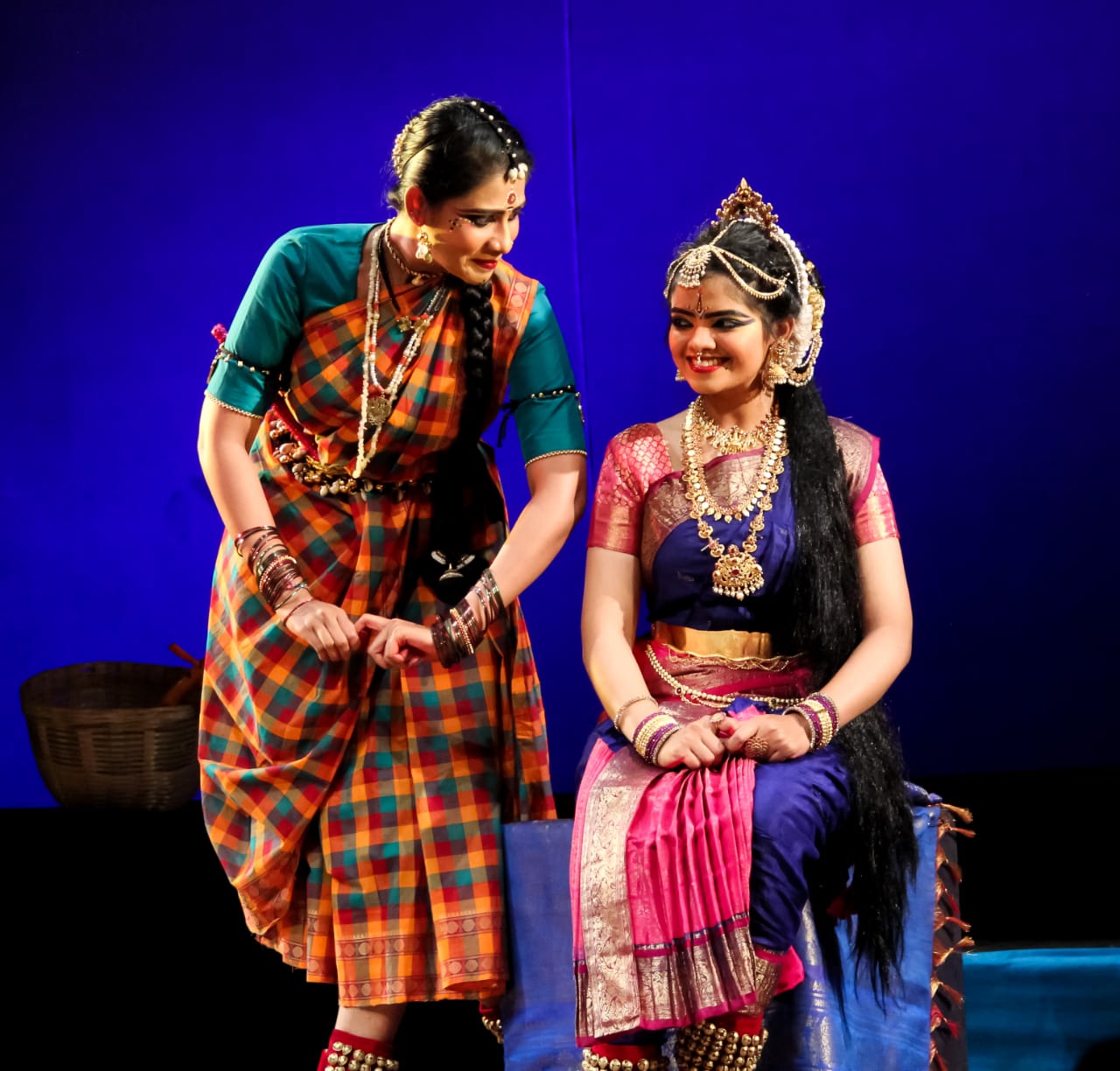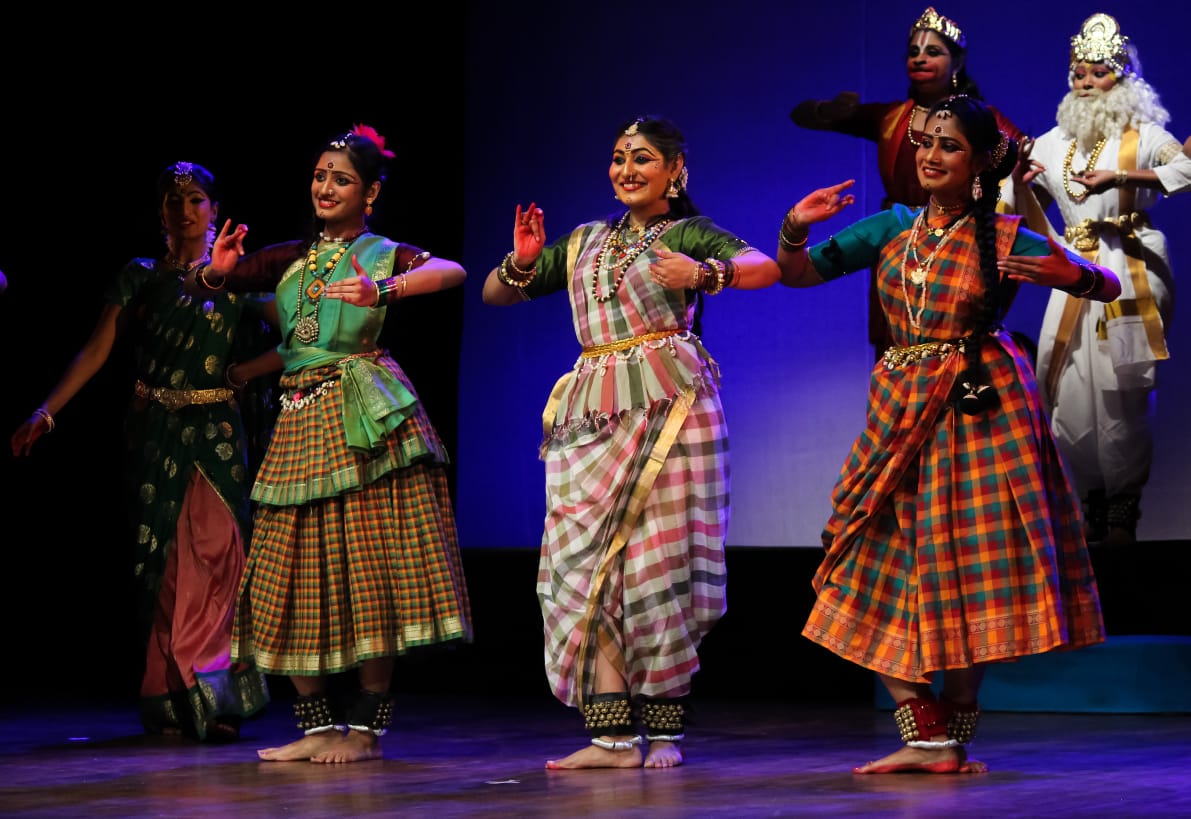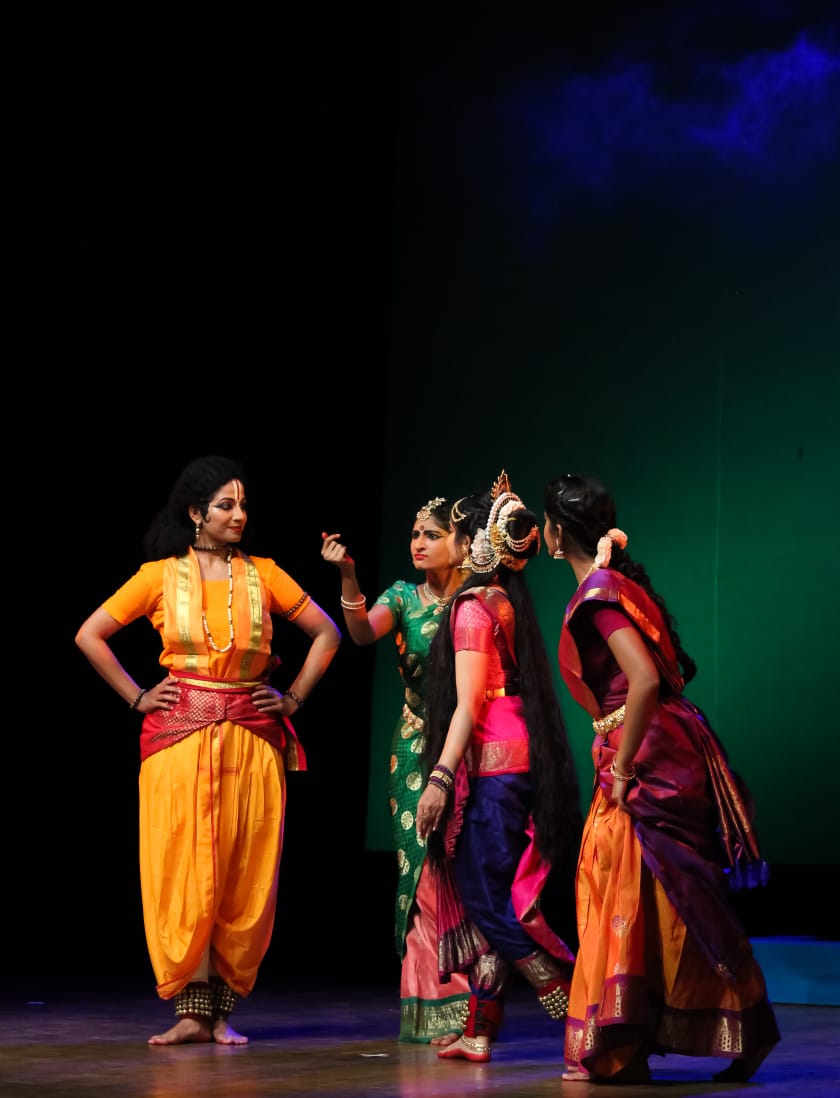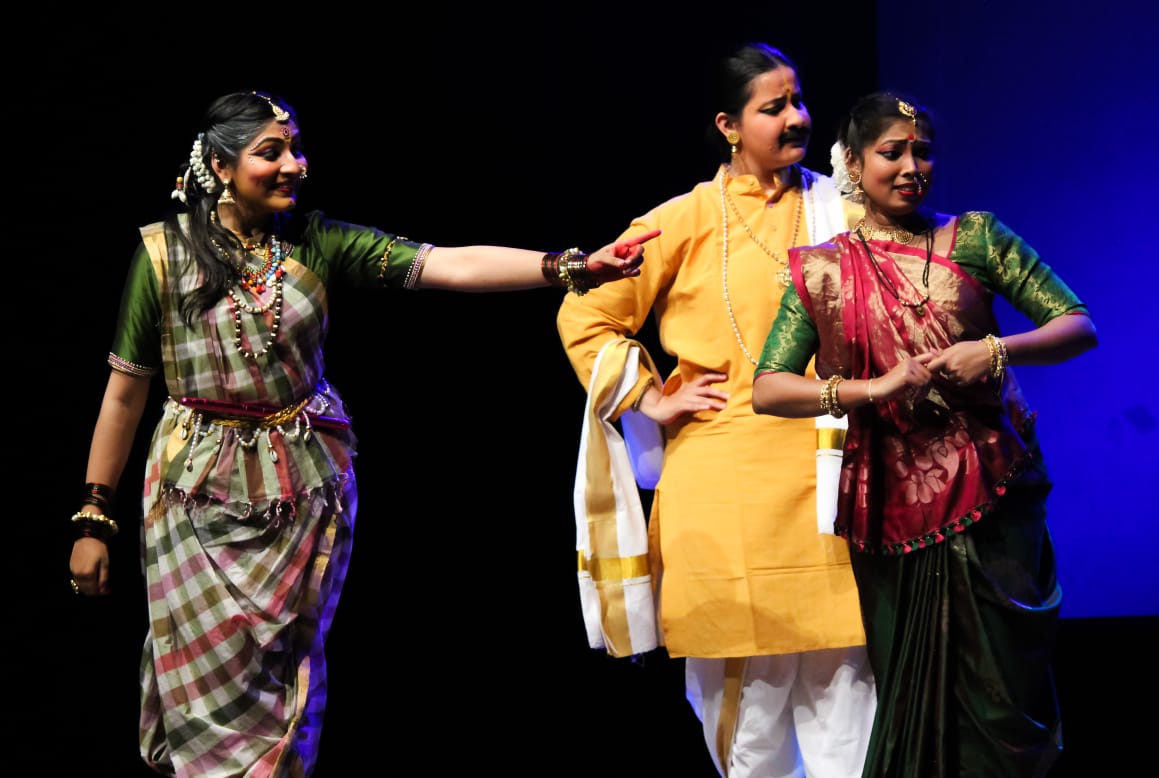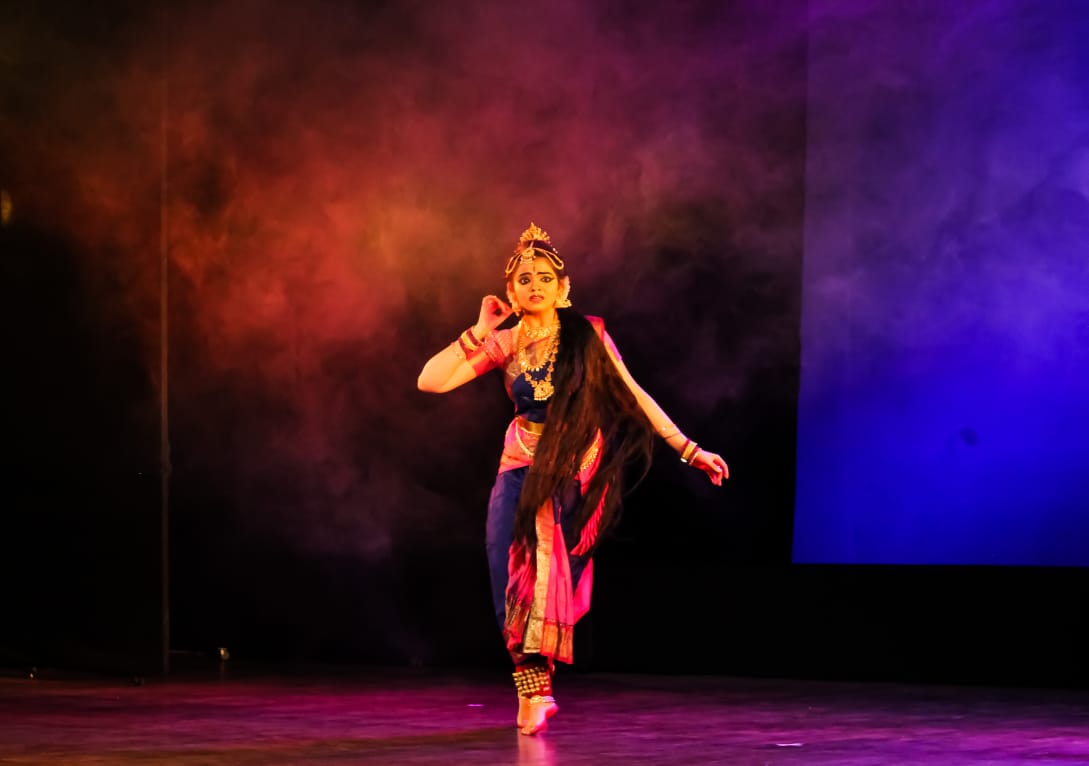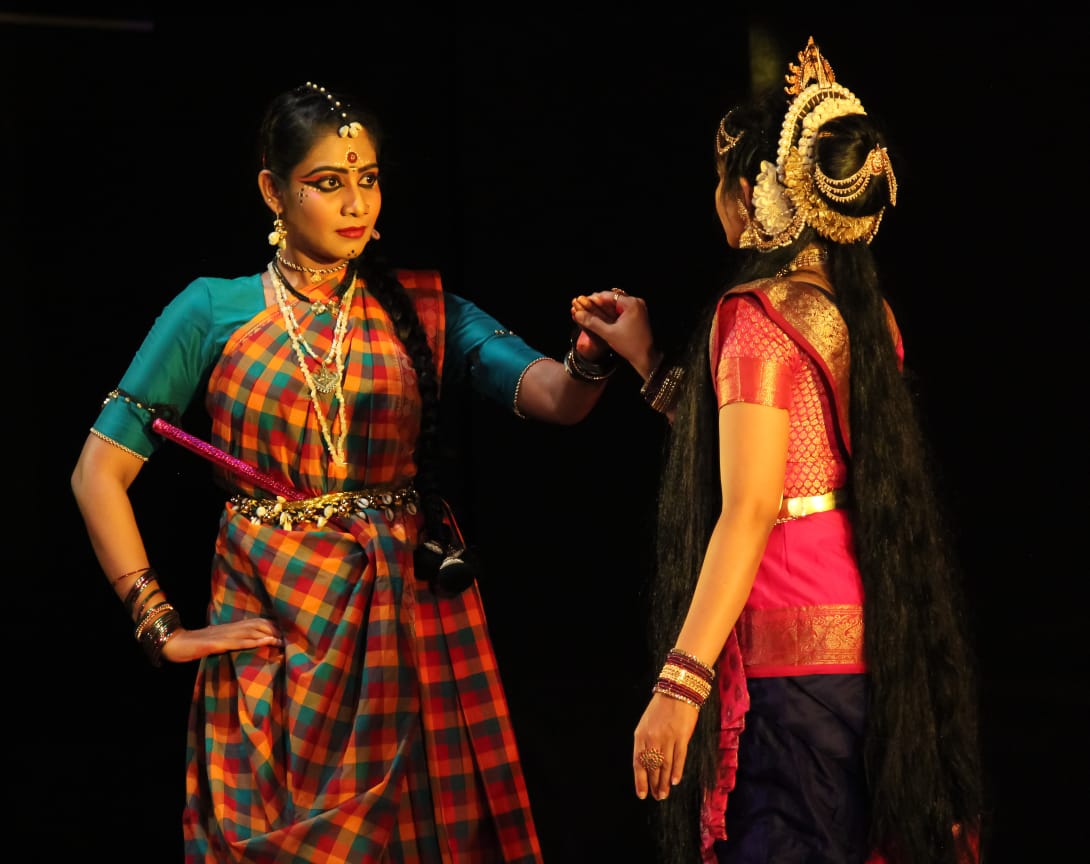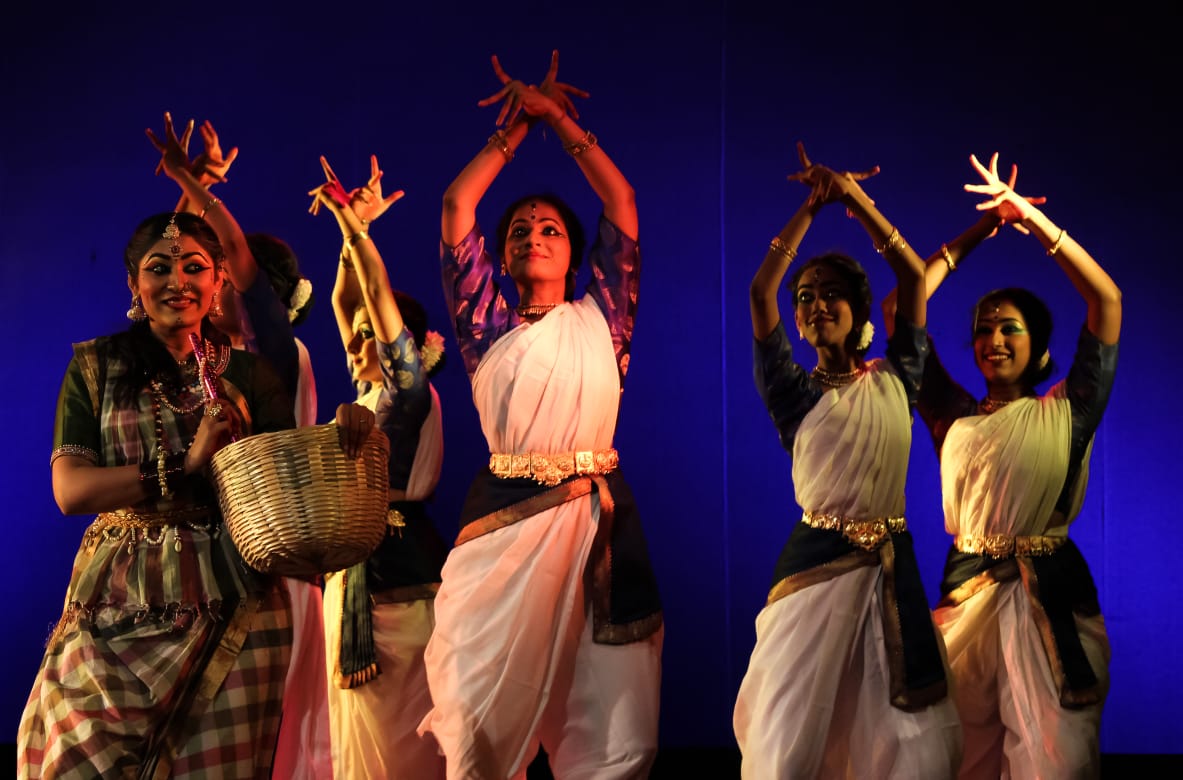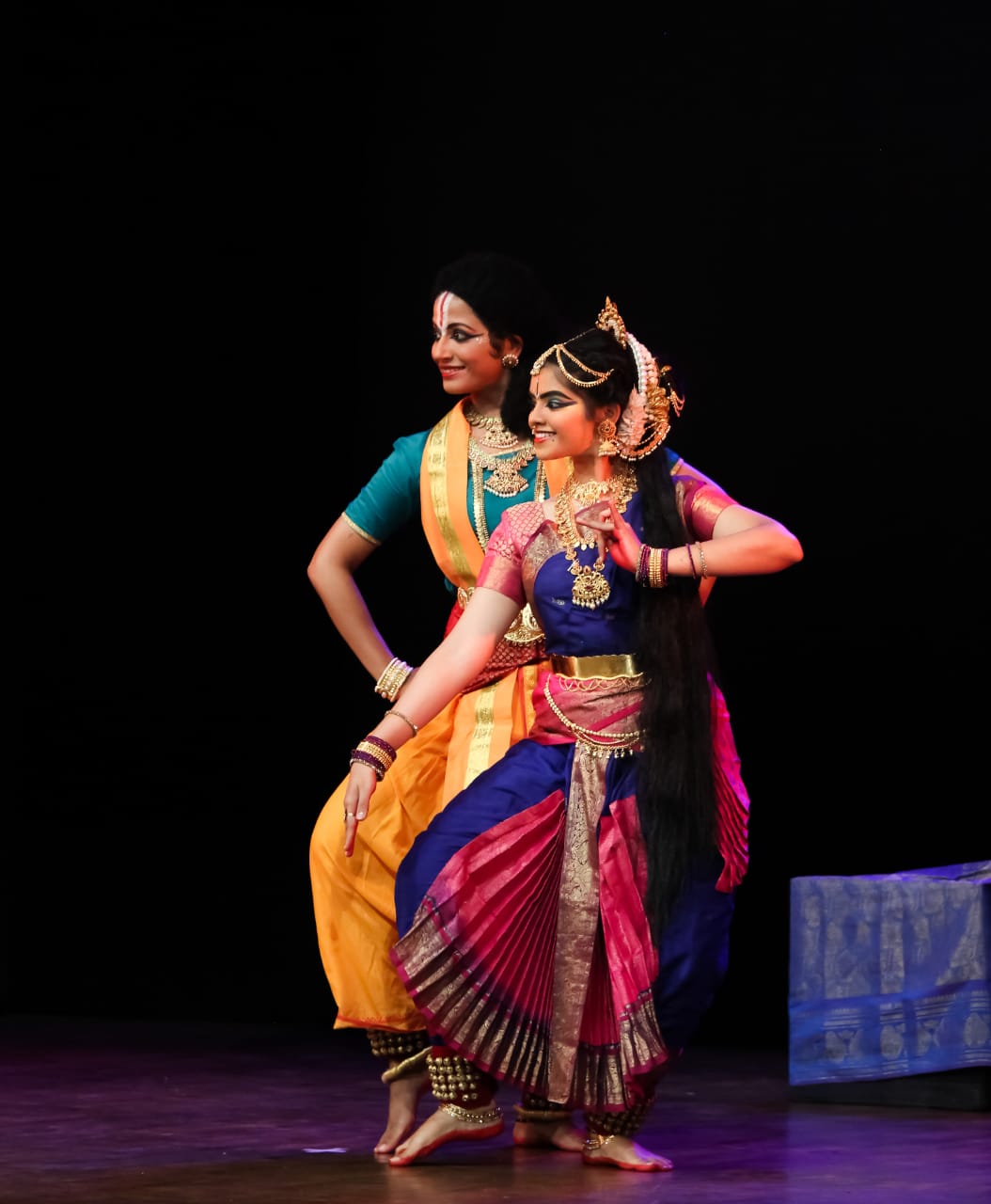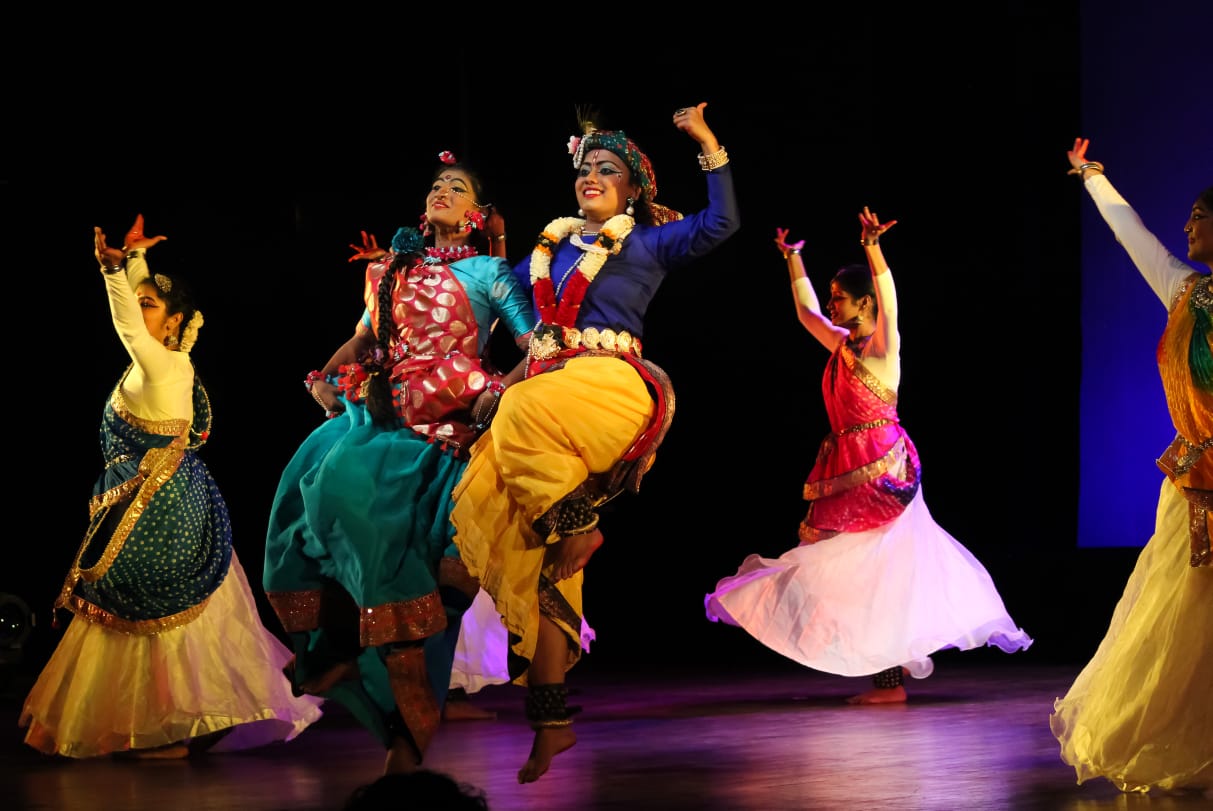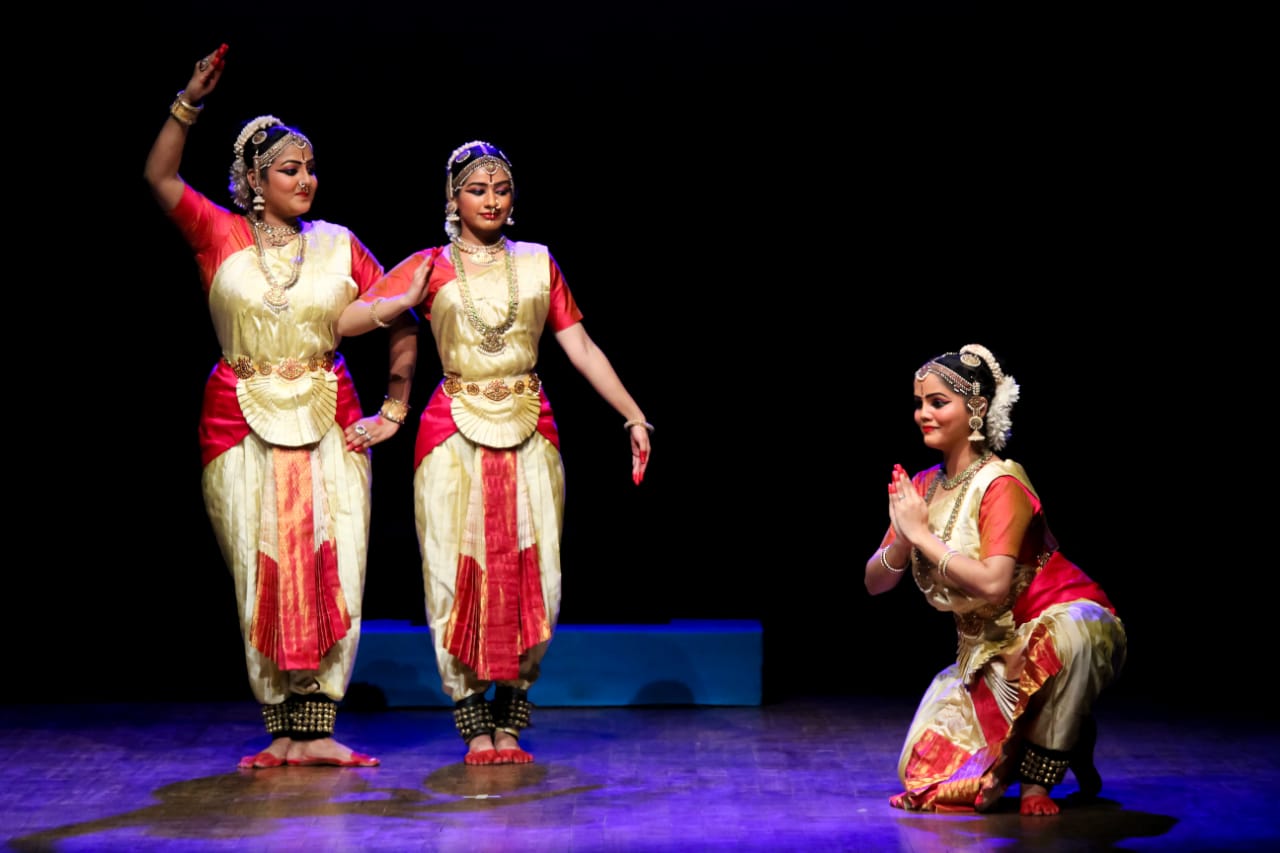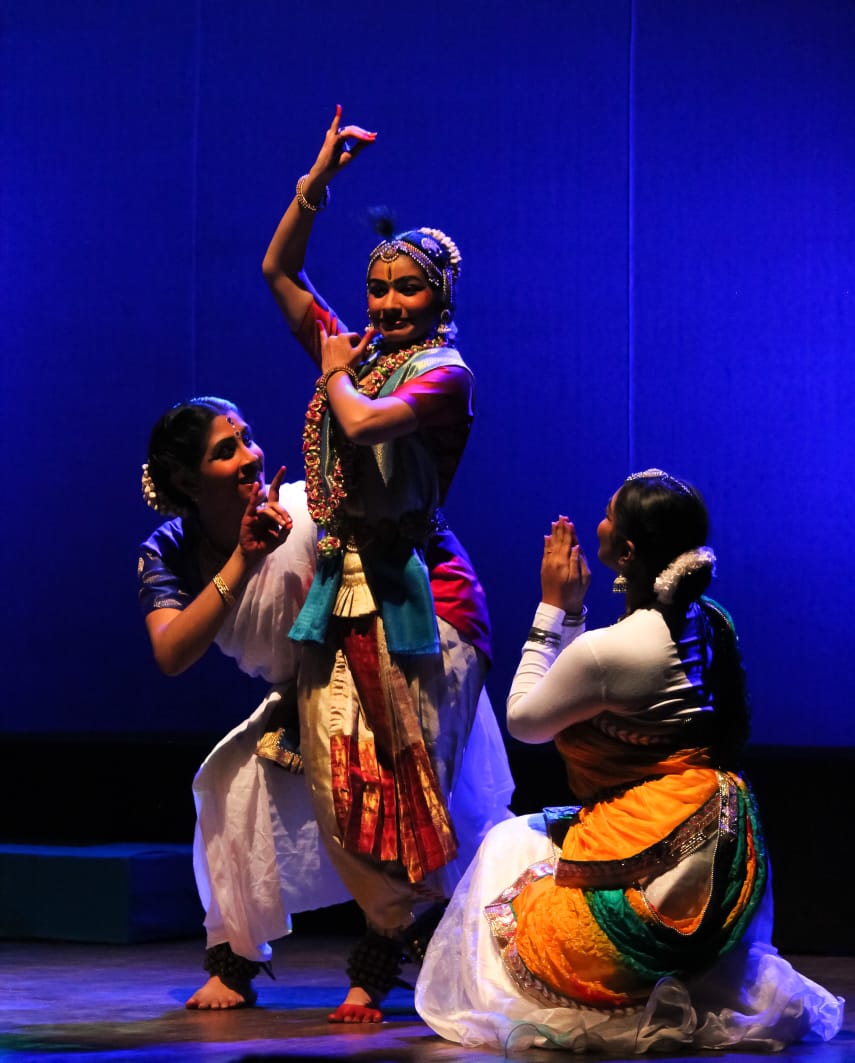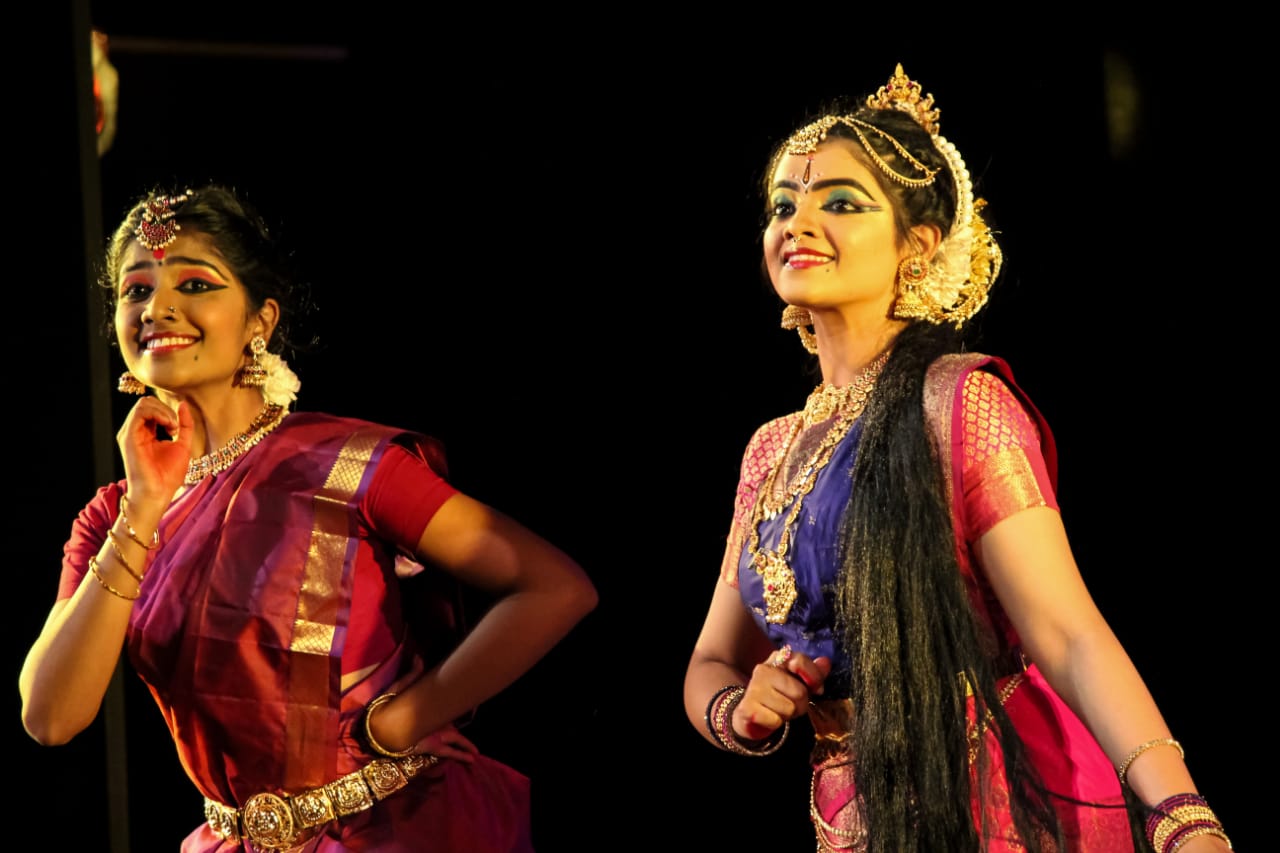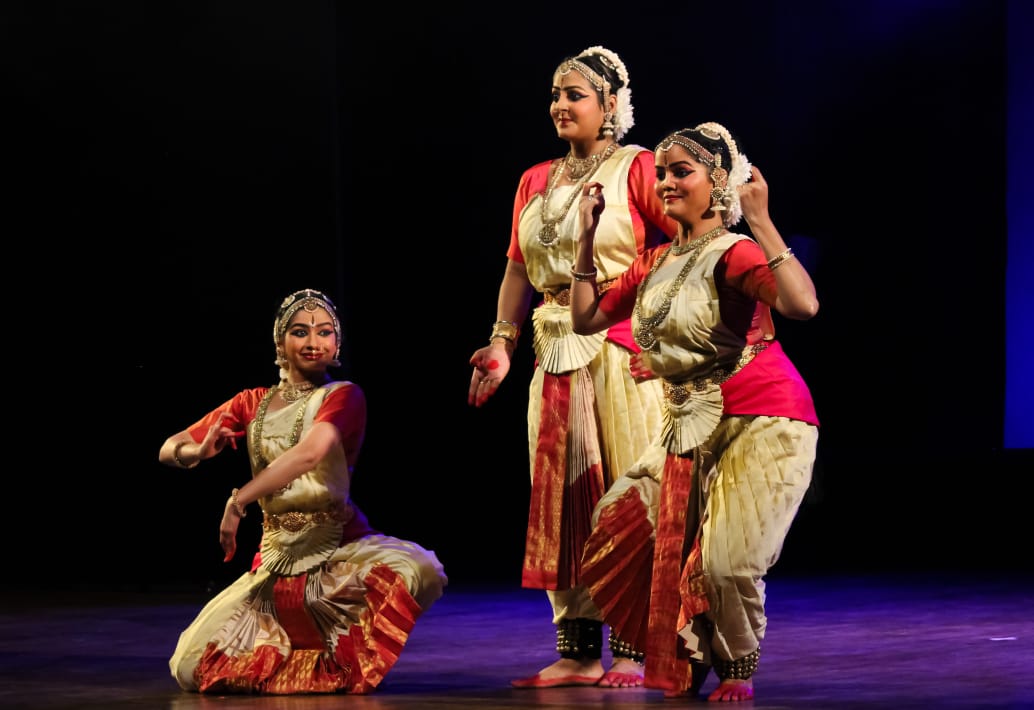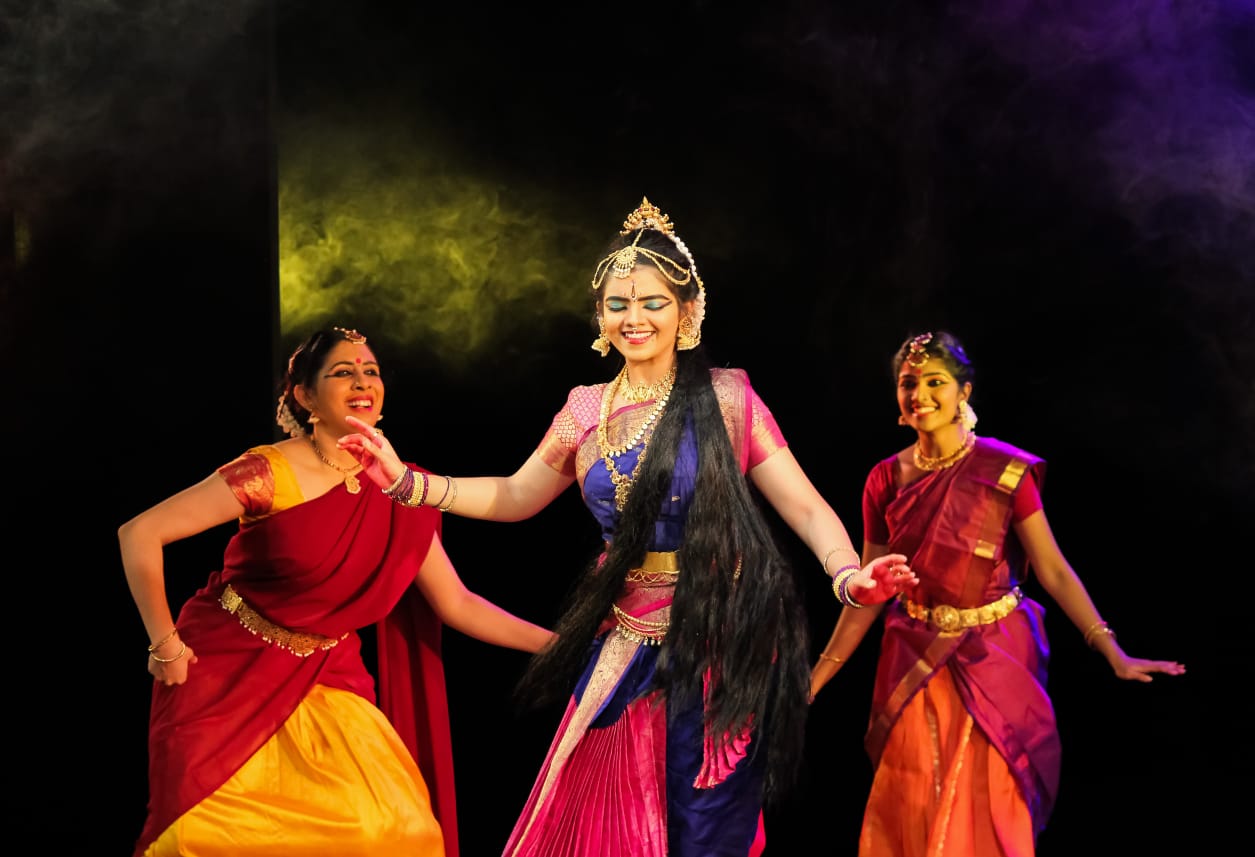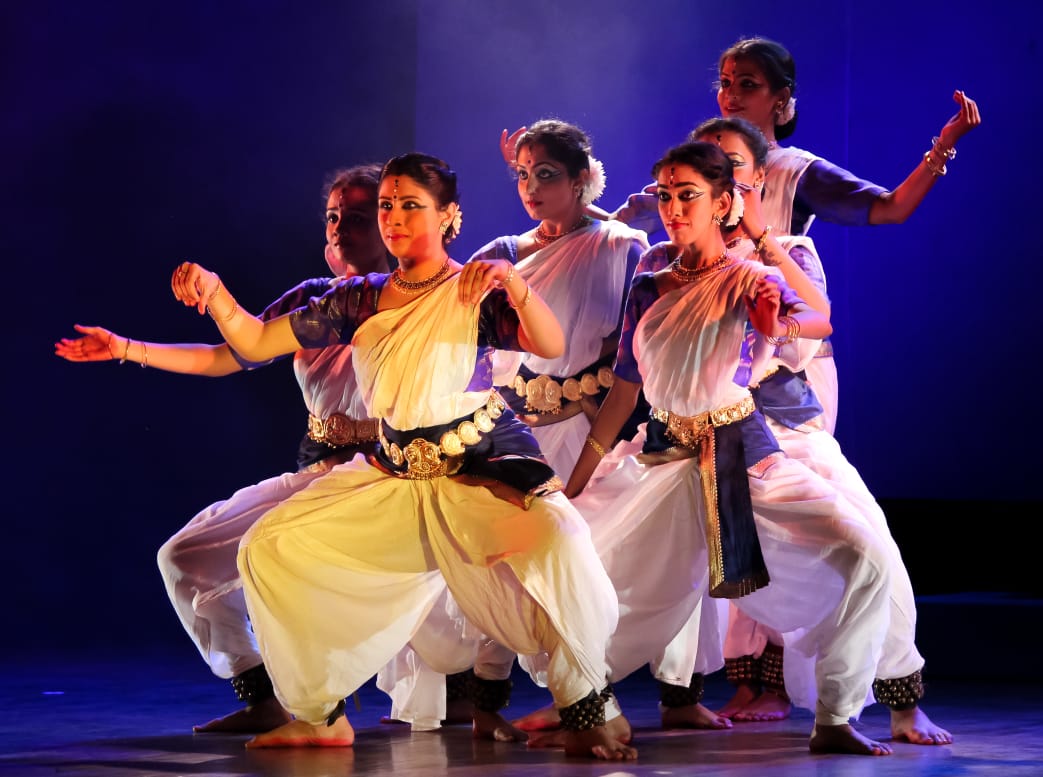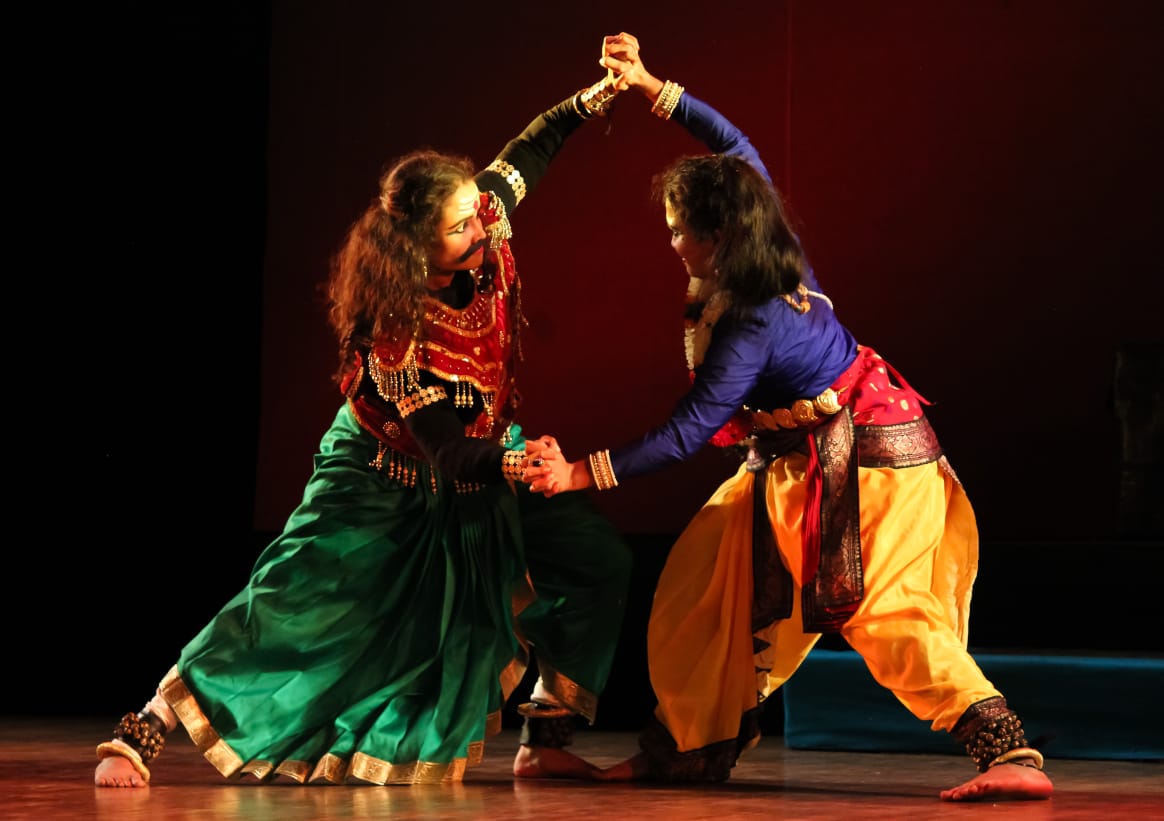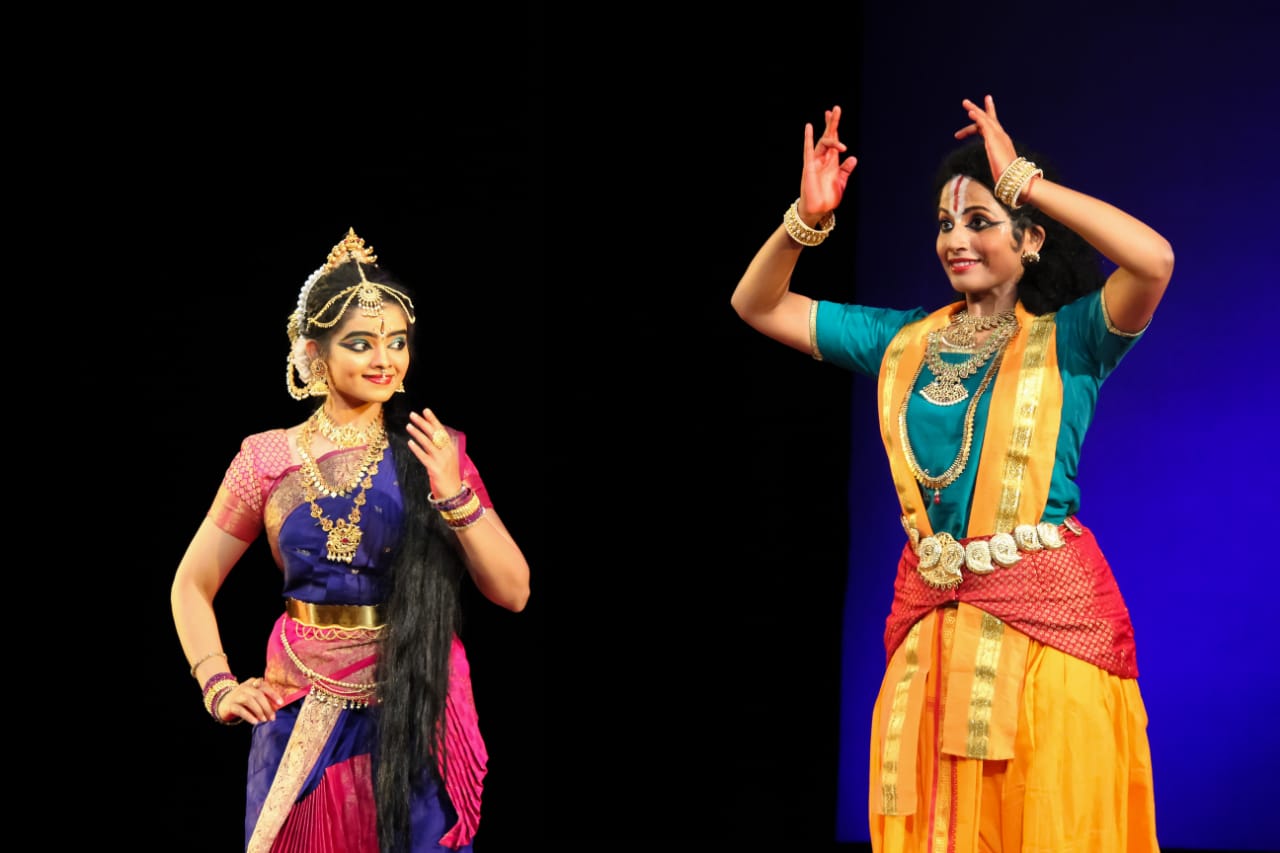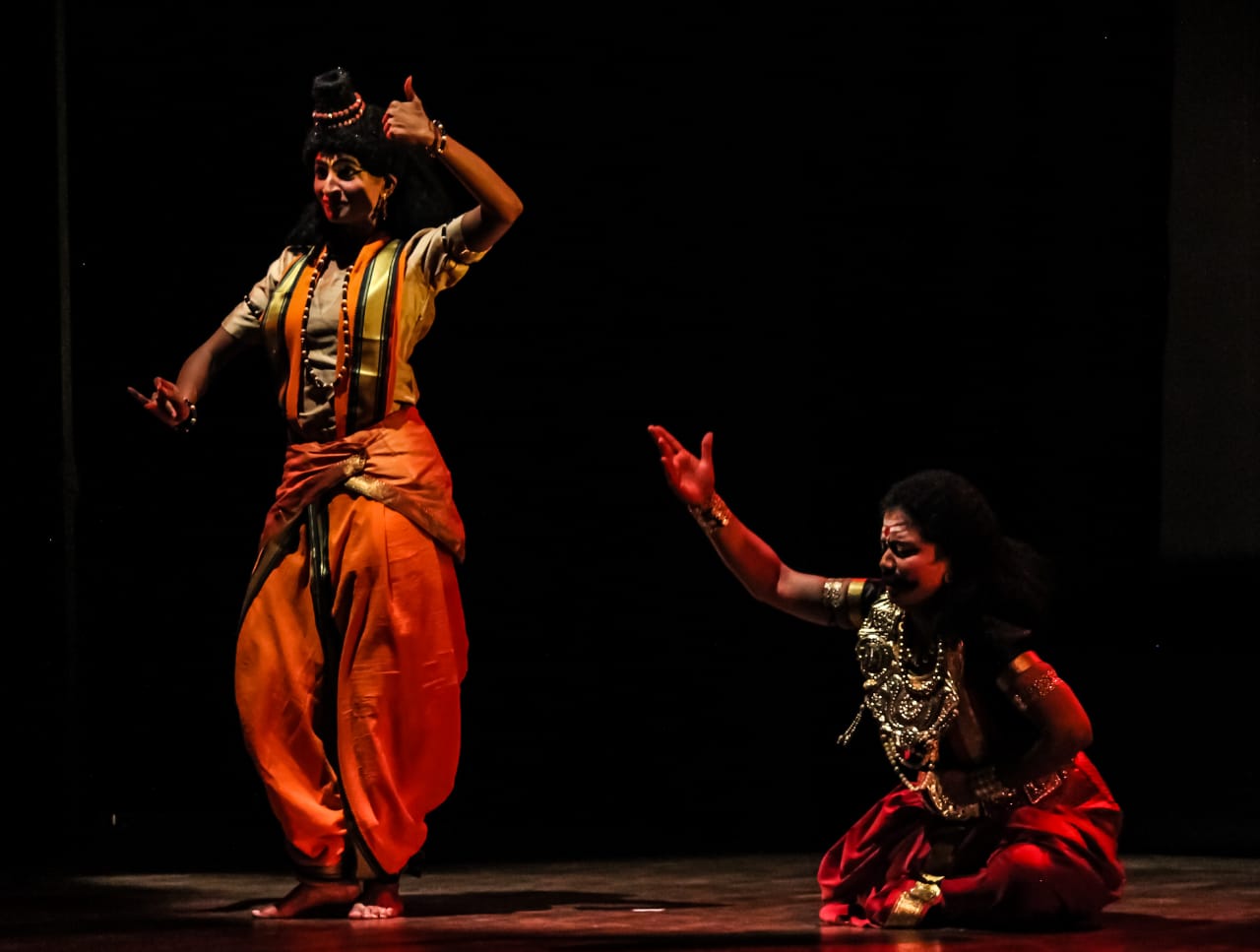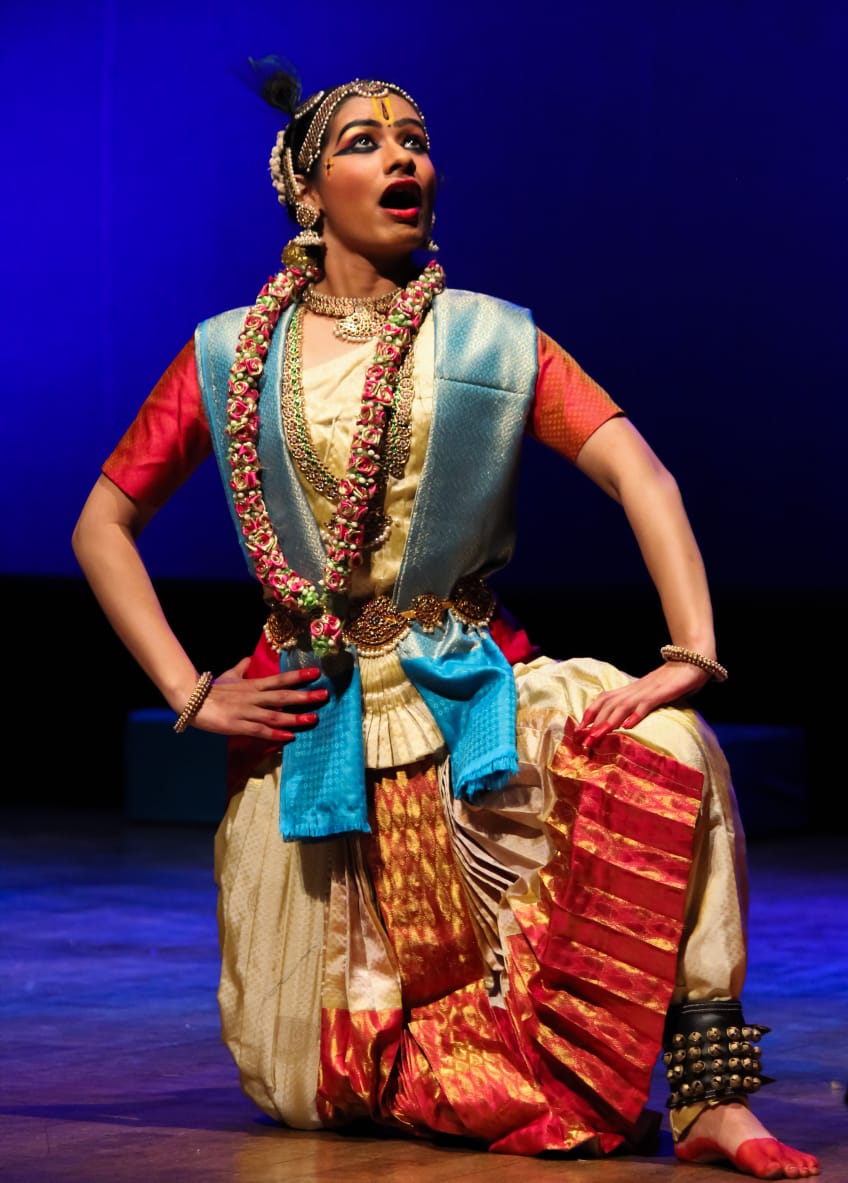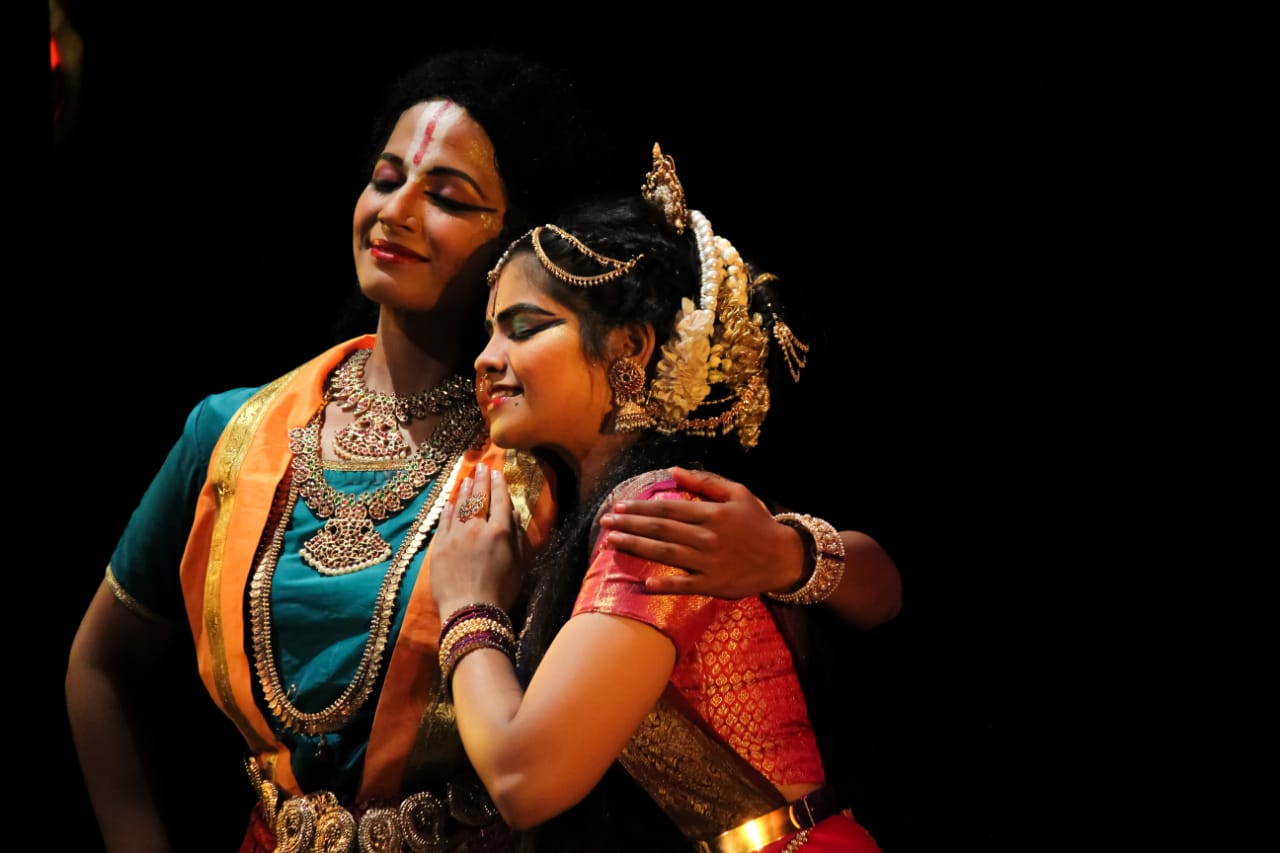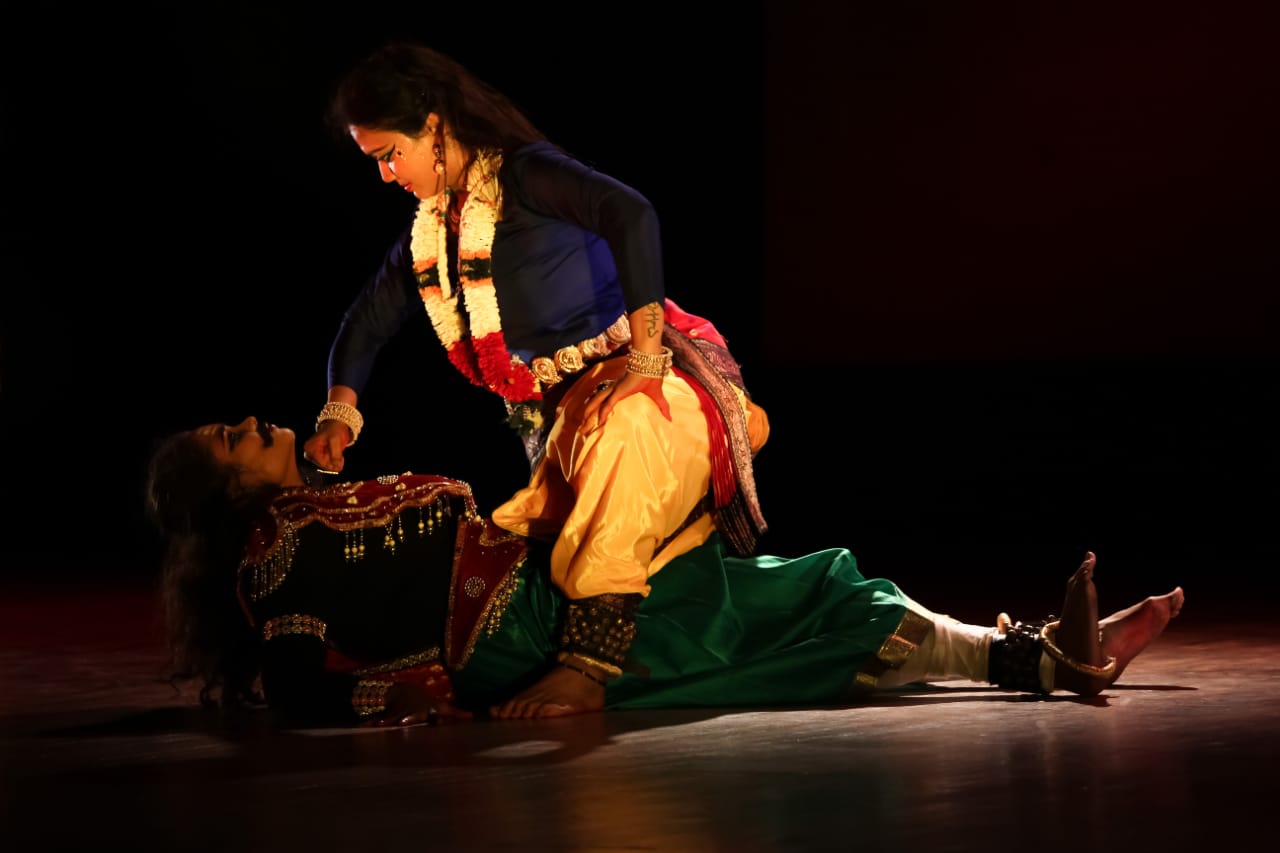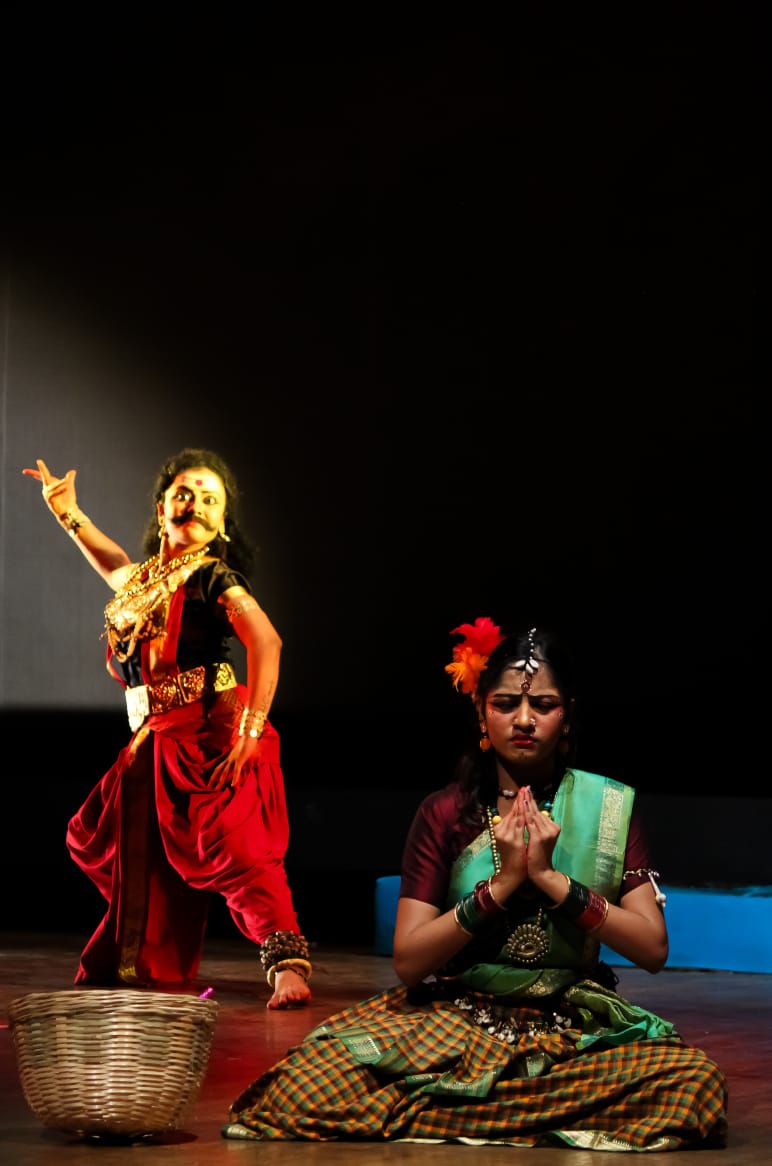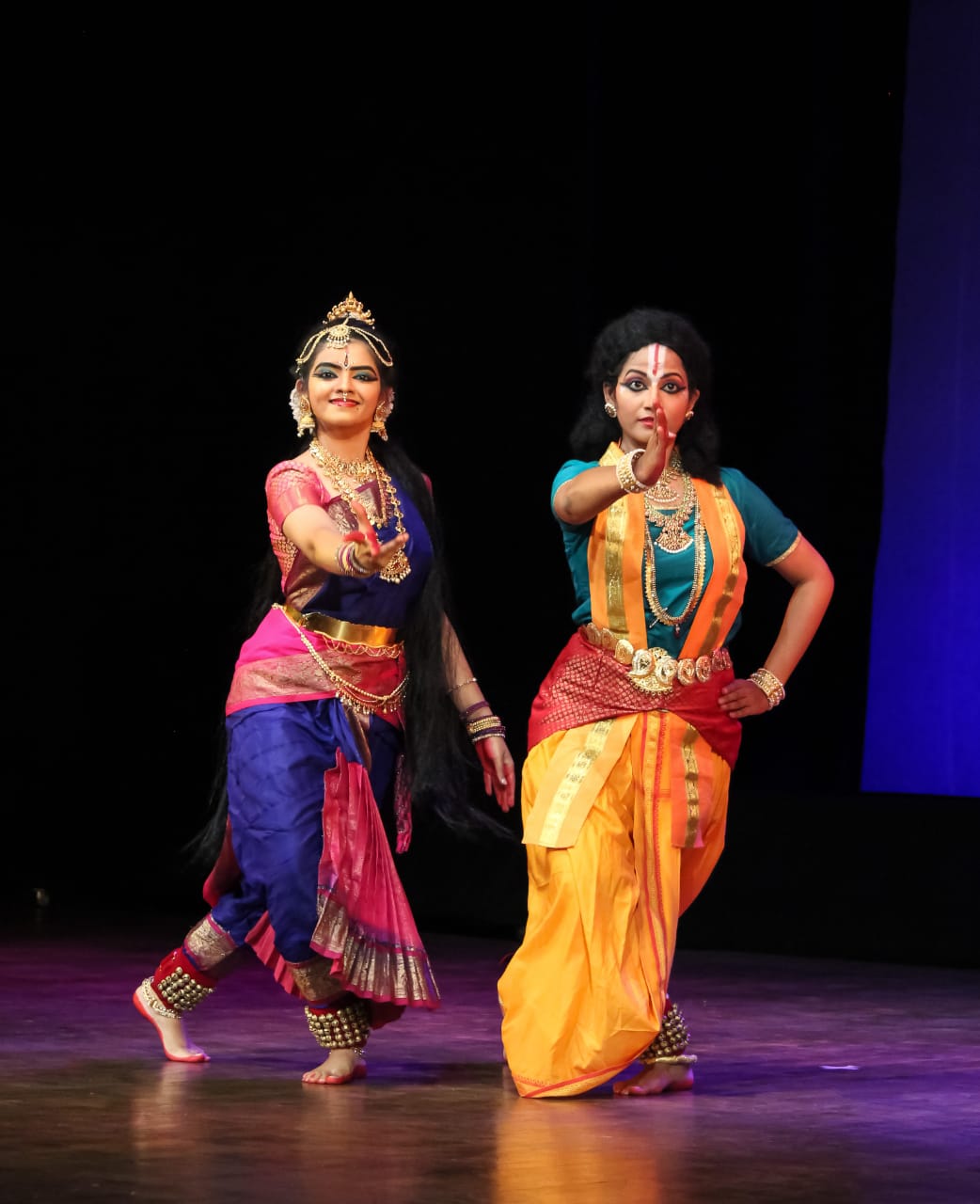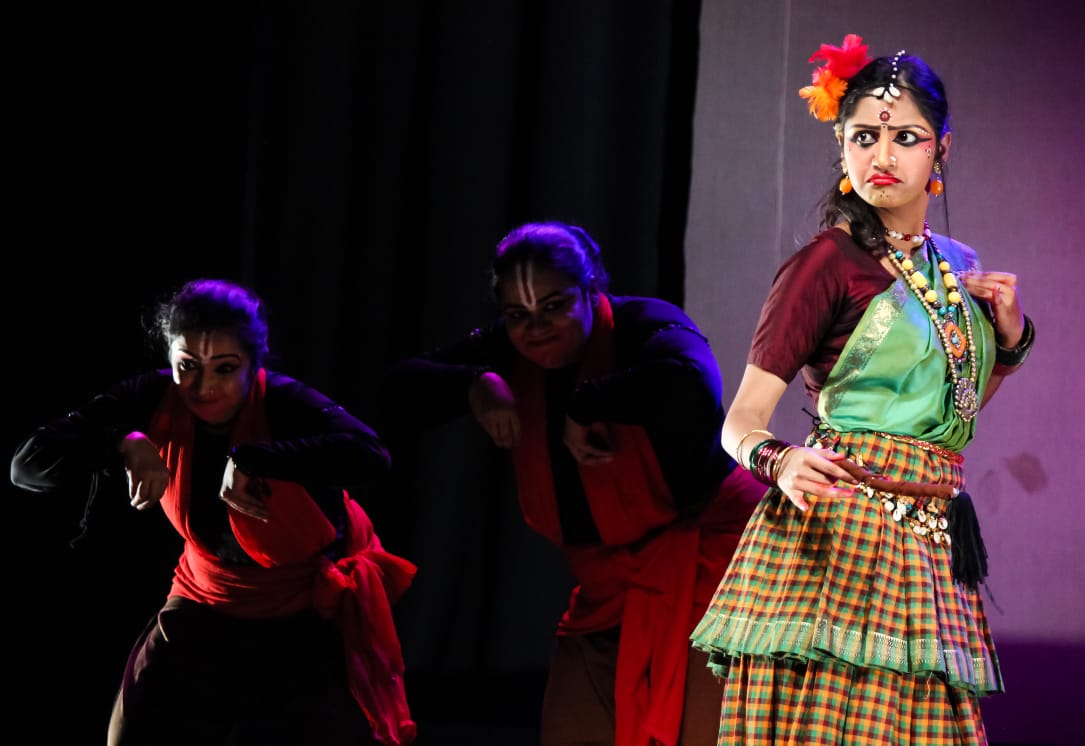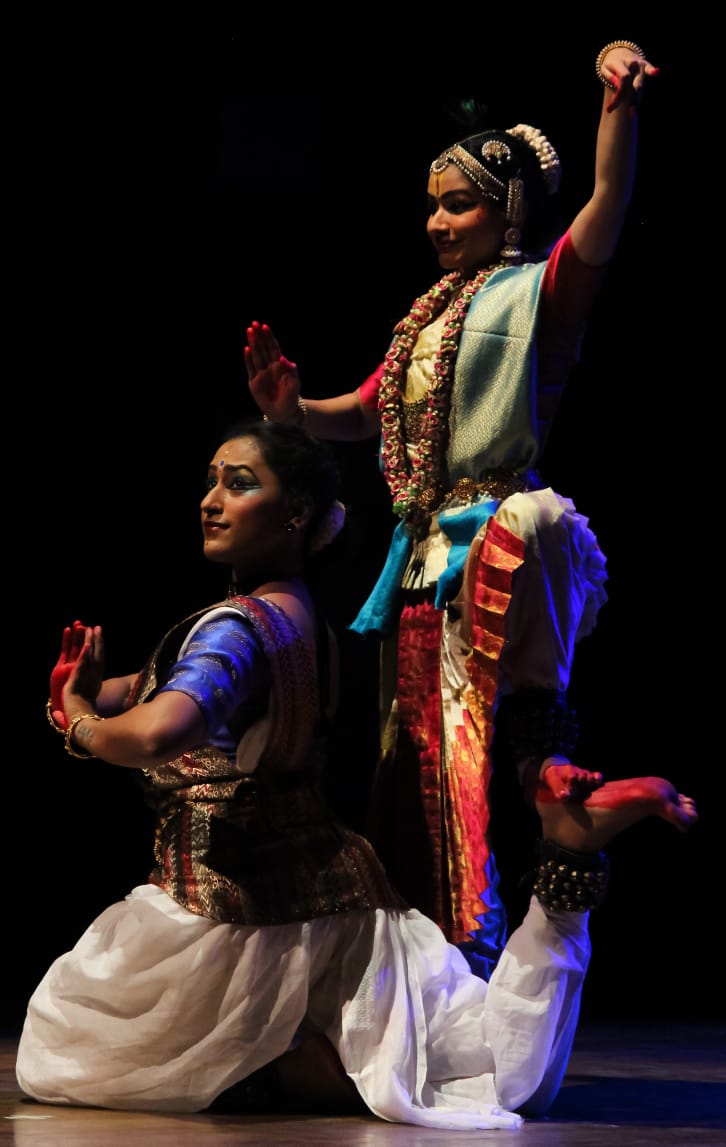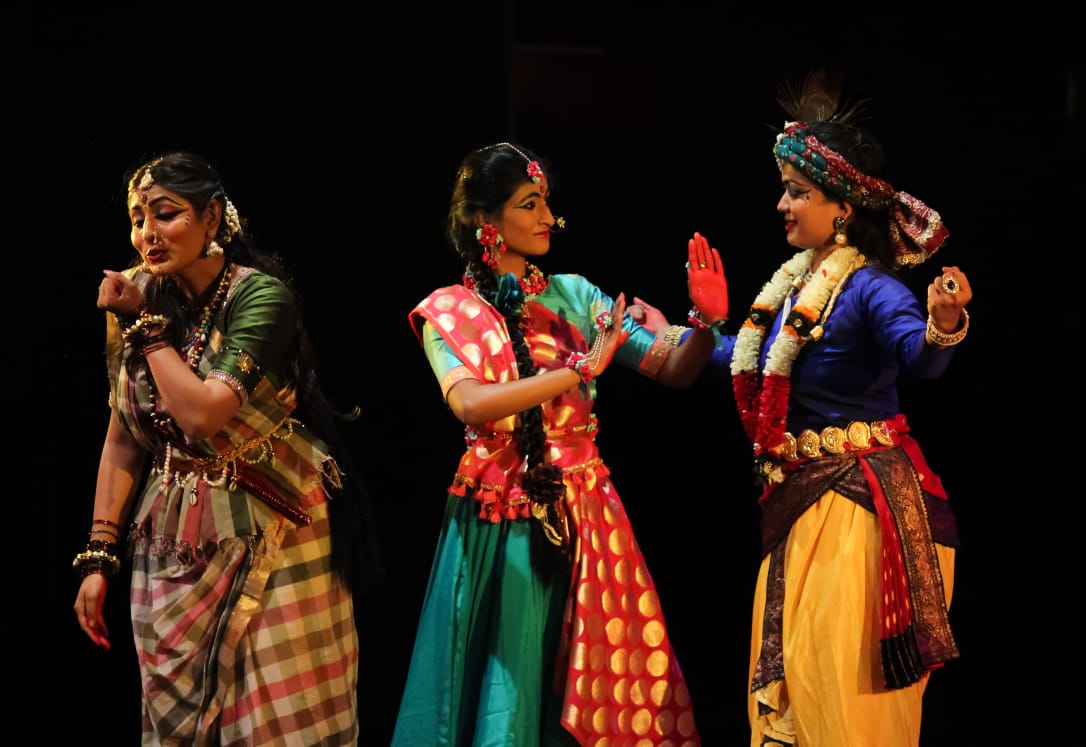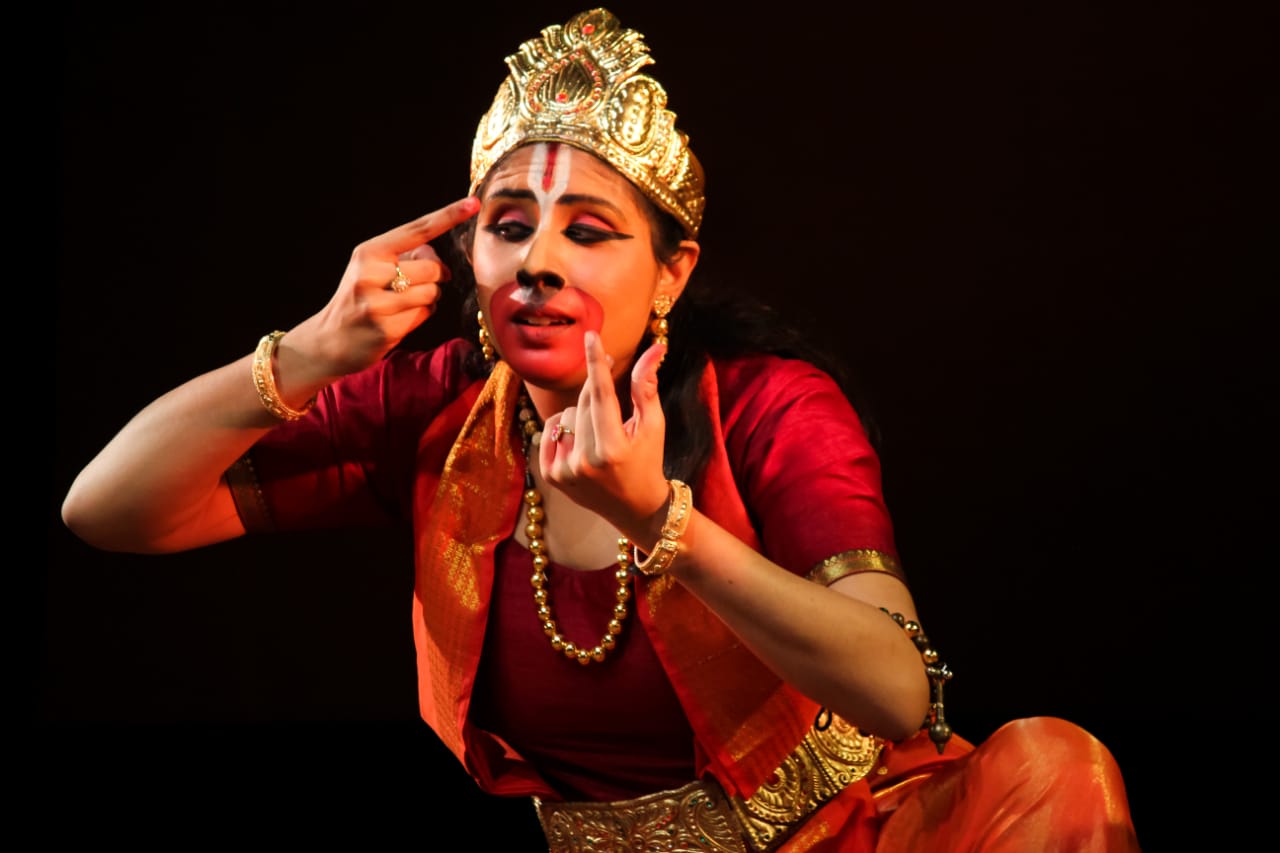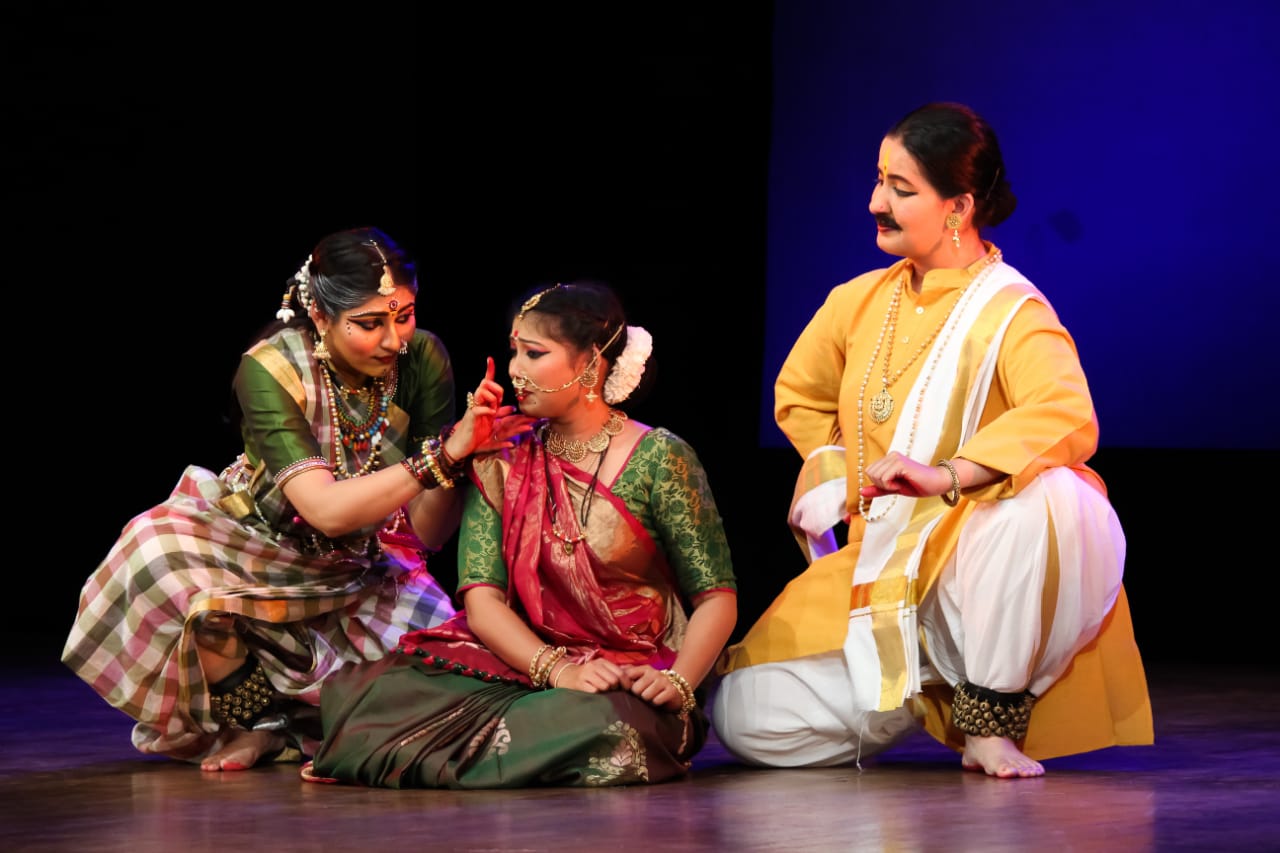Author: Editor
Dance Production/Reconstruction by : Jain University of Performing Arts ( 3rd Sem 2019-20)
Concept and research of Lyrics and subject by : Dr Manorama B N
Suporting Artistes : Vid D.S.Srivatsa(Vocal), Vid Prasanna Kumar( Rhythm pad and special effects), Vid Mahesh Swamy(Flute), Vid Lingaraju(Mridanga), Vid Gopalakrishna (Veena)
Photos by : Pooja Balasubhramaniam
Support by : Faculty, Jain Performing arts Department
On studying the history of Natya tradition as expounded by Bharata in the Natyashastra, we see that two distinct traditions developed due to the regional factors and influences: Marga and Desi. “The Marga or the common classical traditions are like the roots of the Banyan tree of performing arts which have given rise to many branches, they are the Desi forms of today”. The present operatic, dramatic and dance forms can be considered as an off-shoot of the Marga tradition. They resemble some aspects of the Natya tradition, but have attained variations due to regional political, social, economic and cultural factors. This has created diverse Desi forms collectively called the Uparoopaka tradition, where dance and music aspects took a precedence over pure Natya. The Koravanji dance-drama tradition comes under the Chitra-Kavya format of the Uparoopaka tradition.
The koravanji as a Patra has appeared in most Desi forms including Bharthanayam, Kuchupudi, Yakshagana, Bhagvatamela Nataka and is known for her fortune-telling skills. The addition of this Patra to the dance-drama tradition was popularized by Rukmini Devi Arundale who introduced koravanji based dance-dramas like Kutrala Koravanji. In these Koravanji dramas, the heroine falls for the god-like hero, who is being led during the Utsava of the temple. A koravanji appears, who reads the heroines palm and predicts her union with the Hero. This is accompanied by Desi forms of dance and music, which adds to the Charm and mystery of the Koravanji.
Typically, we associate the Koravanji with Tamil Nadu and Tamil Language. As a part of her CCRT Research fellowship work, Dr. Manorama B.N has rediscovered this lost folk tradition of Karnataka and has thrown light on the diverse forms of koravanji Sahitya and their applications in dance. Her research has unveiled that Karnataka has a rich tradition of Koravanji Sahitya that can be adapted for various formats including Solo and Group koravanji formats; Adhyatma, Janapada, Yakshagana and Dasarapada are some of the other classifications. We find numerous koravanji Sahitya’s including: Parvati Koravanji, Arjuna Koravanji, Sri Krishna Parijatam Koravanji, Hanumantha Koravanji, Srinivasa Koravanji, Narada Koravanji, Rukmini Koravanji. In Parvati Korvanji, the origin of the Korvanji clan is traced to Shiva and Parvati, who dress up as the Korava and the Kurathi and console Dasharatha who is longing for children. In each of the koravanji sahitya’s of Karnataka, we observe that the gods take the form of Koravanji and provide consolation to characters like Sita, Rukmini, Devaki in significant events of their lives. This makes the Koravanji Sahitya of Karnataka unique and easily malleable to various formats.
The students of 3rd semester MPA dance, Jain University has attempted to revive the Korvanji Sahitya of Karnataka in the form of a group Dance-Drama production in the year of 2019 (October 4th week) at ADA Auditorium. The production called Kani Kathamani was an attempt to weave together a story with the Koravanji as the hero of the plot. Three korvanji Sahitya were selected from themes related to the Bhagvata and Ramayana. The production has been conceptualized as combination of Folk with Classical elements. The classical element is bought in by the front-line dancers who acts as the Narrators and provide an introduction for each of the stories. The production begins with the front-line dancers, who narrate the origin of the Koravanji Clan in the form of a sanchari. The origin of the Korvanji clan is traced to Shiva and Parvati, (Parvathy Koravanji) who transform into a Korava and the Kurathi and console Dasharatha, who is longing for children. Shiva and Parvati decide to leave this korvanji roopa on earth, and create the Korava and Kurathi. The lifestyle and Behavior of the Korvanji as people is depicted through a Jathi. With this, the first scene comes to an end.
The first tale presented was Hanuma Koravanji. The story is based on Janapada, where Hanuman dresses up as a koravanji to console Mother Sita, who is imprisoned in Asoka Vana. Hanuman’s patra is depicted through an energetic Jathi and his transformation into a korvanji is portrayed. She then travels to Ashoka Vana, where she sees Mother Sita in great sorrow. The korvanji gives hope to Sita by illustrating a vision of the final battle between Lord Rama and Ravana, where good triumphs over evil and Rama emerges victorious. In this way, Hanuman as a koravanji consoles Sita and leaves her reassured about the future to come
The second tale presented was Bramha Koravanji. This Koravanji Sahitya, penned by Helavankatte Giriyamma depicts the days just before the birth of Krishna in Mathura. The gods observe the despondent state of Devaki and Vasudeva, who are about to bring their eighth child into the world. Bramha takes the form of a Korvanji and consoles the couple, who have been terrorized by Kamsa. The korvanji through her magical powers allows Devaki and Vasudeva witness the various events of Krishna as he grows up in Dwaraka: the lifting of Govardhana Mountain, His subduing of Kalinga and Raas krida with Radha and Gopikas. The story culminates with the final fight between Kamsa and Krishna. Thus the Koravanji gives Devaki and Vasudeva hope in their darkest and most despondent hour.
The final story presented was Srinivasa Koravanji, composed by Rukmin.Bayi Shamarav Narasapura. This is a popular tale, where Lord Vishnu takes the Avatara of Srinivasa, the son of Bakula Devi. The story goes that, as he is hunting in the forest he meets the beautiful princess Padmavathi. It is love at first sight for both of them, but Srinivasa hesitates to approach a king for his daughters hand in marriage. Hence he takes the form of a koravanji and meets Dharani Devi, the mother of princess Padmavathi. She reads the princess’s palm and predicts her marriage to Srinivasa and asks Dharani Devi to accept the marriage.
The production has created a magic before the eyes of spectator and has got many appreciation. The Music, weaving of the storyline, Satwika abhinaya and Choreography, Makeup and Costume was applauded.
This research based dance reconstruction has created a history- ‘ First ever dance production of Karnataka’s Multilayered Koravanjis’ . This kind of academic performances by the students is need of this hour to revitalize the energy in the field of Dance and also understanding our own rich tradition and literature.
Kudos to the team !!!!
